
| Light Ermine or Dark-spotted Tiger Moth (also known as : Ardices canescens) ARCTIINI, ARCTIINAE, EREBIDAE, NOCTUOIDEA | (donherbisonevans@yahoo.com) and Stella Crossley |
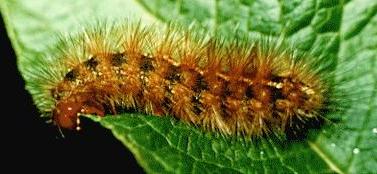
(Photo: Don Herbison-Evans, Sydney, New South Wales)

| Light Ermine or Dark-spotted Tiger Moth (also known as : Ardices canescens) ARCTIINI, ARCTIINAE, EREBIDAE, NOCTUOIDEA | (donherbisonevans@yahoo.com) and Stella Crossley |

(Photo: Don Herbison-Evans, Sydney, New South Wales)
This, like most Ardices Caterpillars, is dark and hairy. The hairs are uniformly brown over the whole body. It has a yellow line down the back, and a brown head.

It eats various herbaceous plants. We have found it feeding on:
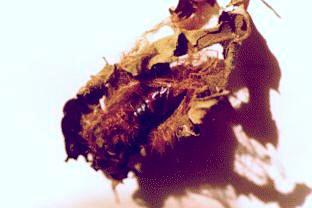
It grows to a length of about 3 cm., then leaves the foodplant, and looks for a dry spot in the soil surface debris, where it forms its cocoon and pupates
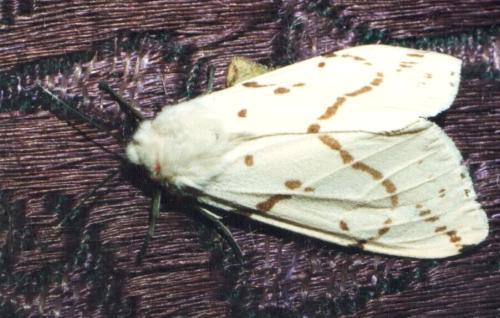
The moth has white wings with brown flecks. The markings on the wings are interesting, because the pattern and degree of marking differs even between moths reared from the same brood of eggs.
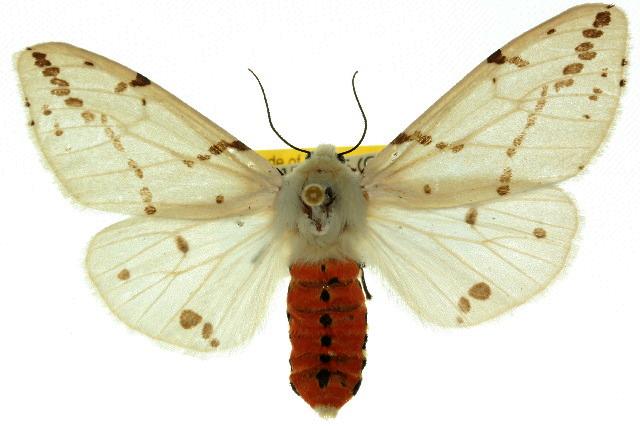
The thorax is white (unlike that of Ardices glatygni, which has a black thorax under white hairs). The legs are black, but the hairs on the femur and upper surface of the abdomen are bright red. Underneath the abdomen is off-white.

The eggs are pale green and spherical. They are laid under a foodplant leaf, in neat arrays of about 100.
The species is found over much of Australia, including:
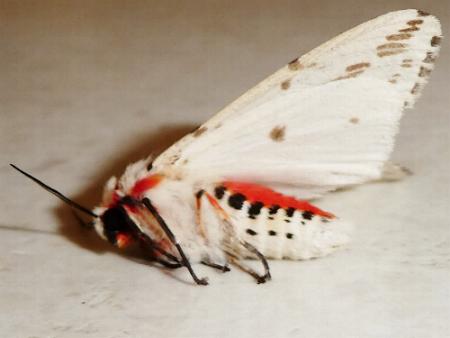
Further reading :
Arthur G. Butler,
Revision of the genus Spilosoma and the allied groups of the Family Arctiidae,
Cistula Entomologica,
Volume 2 (1875), p. 29.
Ian F.B. Common,
Moths of Australia,
Melbourne University Press, 1990, fig. 44.1, p. 435.
L.C. Haines,
Tiger Moths of the County of Cumberland, New South Wales,
Proceedings of the Royal Zoological Society of New South Wales,
April 1969, pp. 59-61, pls. VIII-IX.
Peter B. McQuillan, Jan A. Forrest, David Keane, & Roger Grund,
Caterpillars, moths, and their plants of Southern Australia,
Butterfly Conservation South Australia Inc., Adelaide (2019), pp. 154-155.
Peter Marriott,
Moths of Victoria - Part 2,
Tiger Moths and Allies - NOCTUOIDEA (A),
Entomological Society of Victoria, 2009, pp. 28-29.
Buck Richardson,
Tropical Queensland Wildlife from Dusk to Dawn Science and Art,
LeapFrogOz, Kuranda, 2015, p. 16.
Paul Zborowski and Ted Edwards,
A Guide to Australian Moths,
CSIRO Publishing, 2007, p. 183.
 caterpillar |  butterflies |  Lepidoptera |  moths |  caterpillar |
(updated 22 May 2013, 4 October 2025)